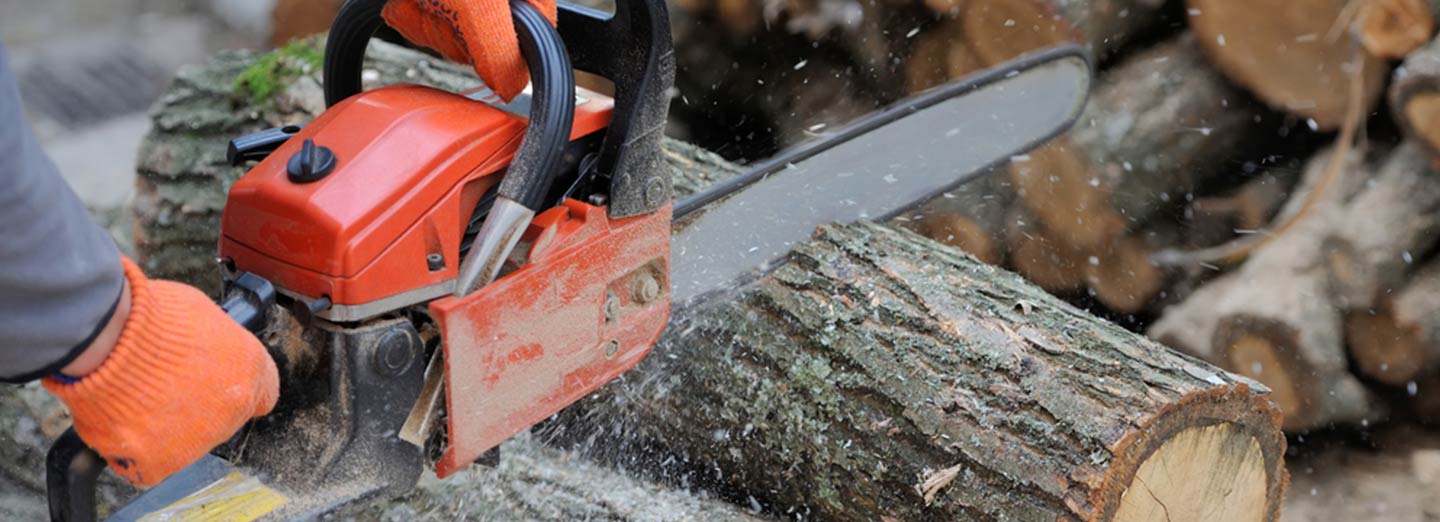
Adult Audience Only
SUMMARY
Operating a chain saw is inherently hazardous. Proper maintenance, personal protective equipment, and correct technique are critical components of safe chain saw operation. Potential injuries can be minimized by using proper personal protective equipment and safe operating procedures.
GENERAL INFORMATION
Scouting America properties rely on chain saws to help clear trails, remove deadfalls, clear timber, and stockpile wood for campfires and heating buildings. To allow for this use, specific guidelines for safety have been adapted for use at all Scouting America activities. The National Camp Accreditation Program Standards, No. 430-056, require that any person who operates a chain saw be approved by the council designee. Chain saw operators must be at least 21 years old and meet one of the following requirements: be a professional forester with current credentials and liability insurance; be a certified arborist with credentials; have written documentation of training in chain saw techniques from either (1) a state or federally recognized chain saw training course approved by the council or (2) the Scouting America Chain Saw Basic training course, No. 430-136.
LET’S LOOK AT ACTUAL SAFETY STEPS AND OPERATION:
Before Starting a Chain Saw
- Check controls, chain tension, and all bolts and handles to ensure that they are functioning properly and that all are adjusted according to the manufacturer’s instructions.
- Always make sure that the chain is sharp and the lubrication reservoir is full.
- Start the saw on the ground or on another firm support. Drop-starting, or the act of pushing the saw away from the body with one hand while simultaneously pulling on the starter cord handle with another, is never allowed.
- Start the saw at least 10 feet from the fueling area, with the chain’s brake engaged.
Fueling a Chain Saw
- Use approved containers for transporting fuel to the saw.
- Dispense fuel at least 10 feet away from any sources of ignition when performing construction activities. No smoking during fueling.
- Use a funnel or a flexible hose when pouring fuel into the saw.
- Before refueling, turn off the chain saw and let the motor cool down. Never attempt to fuel a running or HOT saw.
Chain Saw Safety
- Clear away dirt, debris, small tree limbs, and rocks from the saw’s chain path. Look for nails, spikes, or other metal in the tree before cutting.
- Always have a spotter on hand—someone who can watch for safety hazards while you cut.
- Shut off the saw or engage its chain brake when carrying the saw on rough or uneven terrain.
- Keep your hands on the saw’s handles, and maintain secure footing while operating the saw.
- Proper personal protective equipment must be worn when operating the saw, which includes hand, foot, leg, eye, face, hearing, and head protection.
- Do not wear loose-fitting clothing.
- Be careful that the trunk or tree limbs will not bind against the saw.
- Watch for branches under tension. They may spring out when cut.
- Gasoline-powered chain saws must be equipped with a protective device that minimizes chain saw kickback.
- Be cautious of saw kickback. To avoid kickback, do not saw with the tip. If equipped with a tip guard, keep it in place.
- Have an appropriate first-aid kit within easy access.




